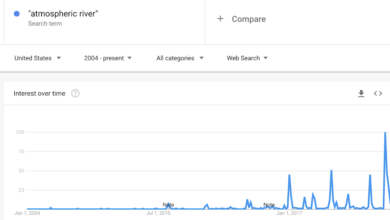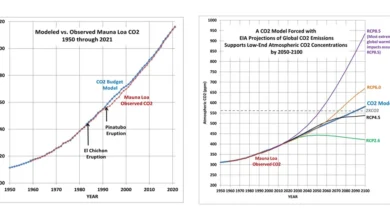PM2.5: Mass Killer or Mass Fraud?

Steve Milloy
EPA is proposing once again to tighten the National Ambient Air Quality Standard (NAAQS) for PM2.5 for the reasons summarized by EPA, below. What is PM2.5 and does it kill people?
Fine particulate matter in outdoor air, also called PM2.5, is the most toxic substance known to man. PM2.5 is responsible for 8 million, or one-in-seven deaths per year on a global basis. A single molecule can kill within just a few hours of inhalation.
Or at least that what environmental and health regulatory agencies around the world claim.
PM2.5 is so dangerous that no one noticed it until the U.S. Environmental Protection Agency (EPA) started trying to regulate it in the early 1990s. PM2.5 kills, in fact, no one. A point that is easily demonstrated and will be done so here. That we still must talk about PM2.5 is a testimony to the stubborn commitment of regulatory agencies to science fraud.
What is PM2.5?
PM2.5 is fine airborne soot and dust. A PM2.5 particle is about one-twentieth the width of a human hair. The soot form of PM2.5 is emitted by all forms of manmade and natural combustion: from fossil fuel plant smokestacks; truck and automobile exhaust pipes; and furnaces, fireplaces and barbeques to wildfires and volcanoes The dust form of PM2.5 exists as pollen, pet dander, dust and mold. Smokers of all sorts inhale PM2.5 in massive amounts, especially compared to PM2.5 levels in outdoor air. You may think that last point condemns PM2.5 as a killer. But it actually is the among the best evidence that PM2.5 doesn’t kill anyone.
What is the history of PM2.5 regulation?
Having eliminated virtually all large and visible particulate matter from US skies by the late 1980s and having established a massive regulatory program in the proicess, the EPA hit on the idea of regulating smaller PM2.5 to keep its regulatory bureaucracy going.
In the late-1980s, the EPA began funding PM2.5 research at the Harvard University School of Public Health. In 1993, the Harvard group issued an epidemiologic study of six cities in the US claiming to associate higher PM2.5 levels with higher death rates. Another larger EPA-funded study reaching the same conclusion was published in 1995.
These studies caught the eye of EPA’s legally mandated panel of independent scientists and experts (the Clean Air Scientific Advisory Council or “CASAC”) who asked EPA for the raw data so that it could review the studies. The agency refused to provide the data. A subsequent request from Congress for the data was also rebuffed.
Based on these two studies, EPA proposed for the first time in 1996 to regulate PM2.5 in outdoor air. The agency claimed that its new regulations would prevent 15,000 deaths in the U.S. per year. As EPA valued human lives at the time at 5 million dollars each, the agency claimed that saving these lives would provide $75 billion worth of economic benefits to the economy per year.
When called upon to review the scientific basis of the proposed rule in 1995, CASAC balked and stated there was insufficient evidence showing that PM2.5 killed anyone. Although the EPA was legally required to obtain the advice of CASAC, the law does not require that the agency accept CASAC’s conclusions. And the EPA did not.
The agency proceeded to regulate PM2.5 for the first time anywhere on the basis that PM2.5 kills. Its success in issuing these regulations emboldened and empowered the agency over the next 15 years to convert and an unknown killer into the most potent killer known to man. The EPA used these claims in a series of regulations during the Obama administration that destroyed 50 percent of the U.S. coal industry.
Does PM2.5 kill anyone?
The EPA, of course, knows that PM2.5 doesn’t kill anyone. Here’s how we know that, too.
Recall that the EPA’s crusade against PM2.5 was launched by the previously-mentioned 1993 and 1995 epidemiologic studies. Epidemiology is the statistical study of disease in human populations, the key part of that description being “statistical.” I could spend pages and pages describing the flaws in EPA’s data and statistical analysis, but your eyes would gloss over and it’s unnecessary thanks to EPA.
In 2012, a group with which I am affiliated, sued EPA for conducting illegal human clinical research experiments involving PM2.5. By the early 2000s, EPA had concluded that any exposure to PM2.5 could kill in a matter of hours and that elderly and sick people were most at risk. To prove its point, conducted numerous experiments on elderly and sick people in which diesel exhaust from a truck was pipelined into an actual gas chamber where the human guinea pigs inhaled very high levels of PM2.5 for hours at a time. This was illegal because researchers are not allowed to conduct Nazi-like experiments where the purpose is to cause harm, especially without the informed consent of the human guinea pigs.
In its defense to our lawsuit, the EPA stated that it conducted the PM2.5 experiments because the PM2.5 epidemiology was only statistics, and as all researchers know, statistics only demonstrate correlation and correlation is not the same as causation. The EPA told the court that the human experiments were needed to establish needed biological plausibility for the claims of the epidemiology studies.
The EPA’s unequivocal admission that epidemiology alone was an insufficient basis to conclude that PM2.5 kills obviates any further need to consider the many significant flaws of the PM2.5 epidemiology.
And what were the results of those clinical experiments?
Despite exposing hundreds of elderly (as old as 80) and sick people (with asthma and heart disease) to extraordinary levels of PM2.5 (as high as 75 times the level in average US outdoor air), not so much as a gasp, wheeze or cough, much less any death, was reported. The clinical research, in fact, provided not an ounce of biological plausibility to the (dubious) epidemiology.
There is one last important point to make about EPA’s PM2.5 epidemiology. Recall that EPA refused to produce to the CASAC and Congress the raw data used in the epidemiology studies it funded. Frustrated by this most unscientific refusal to share data, I sought a way around the EPA refusal and discovered one.
The state of California provides vital statistics, such as death certificates, to researchers. The state also has the best and most localized air quality readings that can be readily matched to the death certificates. After obtaining some of these death certificates and related air quality data, I did a rough epidemiologic study of my own to see if deaths were in fact correlated with PM2.5 levels. They were not.
I subsequently convinced prominent and expert researchers to obtain 12 years-worth of California death certificate and air quality data and do their own rigorous study. Their study of all deaths in California between the years 2000 to 2012 (more than 2 million) reported no correlation between PM2.5 and death.
But there’s more
There is much more relevant evidence pertaining to PM2.5 and death, and none of supports the EPA’s claims.
1. Deadly air pollution incidents in the 20th century
There were three air pollution incidents in the 20th century associated with deaths (1) in 1930, 100 people died in the Meuse Valley, Belgium (100 deaths); (2) in 1948, 20 people died in Donora, Pennsylvania; and (3) in 1952-1953, as many as 13,000 died in London, England. EPA and others claim these incidents as proof that PM2.5 kills. These claims are false.
In none of these incidents was PM2.5 blamed for deaths by contemporaneous authorities. In all three instances, the deaths were attributed to acidic industrial gases trapped in the local atmosphere by atmospheric inversions. The markedly high death toll in London is likely the result of confounding by a severe influenza epidemic that occurred that particular winter.
So it is these specific, extreme and rare circumstances (uncontrolled acidic industrial emissions amid a temperature inversion) that are required for deadly air pollution incidents to occur. This hypothesis is bolstered by the extreme PM2.5 pollution that often occurs in places like China and India today.
Although PM2.5 levels in Chinese and Indian cities can reach quite high levels e.g., 100 times average outdoor levels in the US no actual deaths are ever reported. The reason for this is that the level of acidic gases always remains in a safe range. Simply inhaling PM2.5 alone kills no one.
2. Coal miners don’t die earlier
If PM2.5 is the killer that EPA claims it is, it stands to reasons that PM2.5 should kill people who have very high exposures to it, like coal miners and diesel workers. Until recently, coal miners in the US were permitted to be exposed on a career basis 8 hours per day, 5 days per week, 52 weeks per year for 20 or so years to 150 times the amount of PM2.5 as is in average US outdoor air. Yet coal miners, despite whatever health problems they might develop, have the same life expectancy as the average worker. That is true for diesel workers as well.
3. The Smoking Paradox
The ultimate slayer of EPA’s PM2.5 claims is smoking. None of what follows is meant to encourage smoking, but facts are facts.
When smokers inhale, they inhale a lot of PM2.5. If you live in the US and inhale average air, you will inhale about 240 millionths of a gram of PM2.5 every day. And EPA claims that is a potentially deadly dose of PM2.5.
Now if you are a smoker, not only will you inhale that 240 millionths-of-a-gram every 24 hours, but for every filtered cigarette you smoke, you will inhale and astounding 8,000 to 10,000 millionths-of-a-gram in the five minutes or so it takes to smoke a cigarette. But no one dies from smoking a single cigarette. The PM2.5 exposure is even higher for a marijuana joint, on the order of 100,000 millionths-of-a-gram. We give sick people medical marijuana. Have you ever heard of one of them dying from smoking a joint? No.
Speaking of sick people, it apparently is not unheard of for some elderly and sick people who require oxygen to continue to smoke against doctors’ orders. As it turns out, they can continue smoke for years and the greatest risk to them is that they ignite their oxygen and set themselves on fire. But that is obviously not a PM2.5 problem.
Research published recently in journals such as the New England Journal of Medicine and the Journal of the American Medical Association reports that smokers who quit smoking by age 40 or so, have normal life expectancy. That is, these limited smokers can expect to live as long as someone who has never smoked.
For a mental image of what this means, a nonsmoker will inhale approximately two sugar packets worth of PM2.5 over the course of his 80-year life expectancy. A limited smoker, on the other hand, will inhale about a 4-pound bag of sugar’s worth of PM2.5. But both the nonsmoker and the limited smoker will have the same life expectancy of 80 years! If PM2.5 is a killer, as per EPA, how can that possibly be?
EPA is aware of this paradox and has no credible answer for it. One of EPA’s PM2.5 researchers once took a crack at the paradox and concluded that PM2.5 was only deadly at low levels of exposure (like in outdoor or indoor air), but not at high levels (like from smoking). That is, of course, an absurd explanation. It is well established and uncontradicted toxicology principle that toxicity increases with greater exposure.
What about the body counts?
Mentioned earlier was the claim that PM2.5 kills eight million people around the world annually. If PM2.5 doesn’t kill anyone, where does this number come from? It is the result of dishonest epidemiologists.
Recall that epidemiologic studies are really just statistical studies that produce mere correlations between exposure and disease. But these correlations are useful only for determining whether there is a likely statistical relationship between exposure and disease. Not only do they not establish causation (recall EPA’s admission in court), these correlations also can’t establish the risk of disease based on exposure. The reason for the latter point is that populations studied in epidemiology tend not to be representative samples of the population.
What the body count calculators do is wrong pretend that the correlations represent risk, which is then applied to a population to produce the body count estimate. In epidemiology, this inherently flawed process is called “attributable risk.” It is pure statistical malpractice.
Conclusion
The EPA invented PM2.5 as the most toxic substance known to man that is, any inhalation can result in death as soon as hours. Or, alternatively, PM2.5 may kill you after a lifetime of (unavoidably) inhaling it. No other substance known to man works this way and there is no body of science to support these claims. The EPA’s own courtroom admission undercuts its claims about the epidemiology and its own human experiments fail to provide any support to the motion that PM2.5 causes adverse health impact, let alone kills.
The EPA has refused for decades to produce the data so independent scientists can try to replicate its epidemiologic studies. The agency has essentially ignored the results of a large well-conducted epidemiologic study that directly contradicts its own. All real-world data contradict EPA’s claims and the smoking epidemiology demonstrates quite clearly just how ludicrous EPA’s claims are.
Though the EPA and other health and regulatory agencies around the world claim that PM2.5 kills as many as 8 million people every year, these claims are based on statistical malpractice. Moreover, no one has ever produced for medical examination a single body of someone allegedly killed by PM2.5. With so many millions allegedly killed, one would think as least one body could be produced somewhere.
The bottom line is that the claim that PM2.5 causes death is the most demonstrable science fraud of our time.
Epilog: The EPA PM2.5 railroad continues
In 1996, the EPA’s CASAC concluded that the agency had not demonstrated that PM2.5 kills anyone. Over the next 23 years, the EPA rigged the CASAC review process so that such a conclusion wouldn’t be drawn again. But it did happen again. In 2019 after CASAC had be purged of its political bias, CASAC concluded that EPA’s health claims from PM2.5 were without a scientific basis.
But when the Biden administration took control of EPA, the Trump CASAC was summarily dismissed and CASAC was restocked with agency cronies who readopted the view that PM2.5 kills. Based on the rubberstamp of the new CASAC relying on the same old junk science, EPA has just proposed to further tighten PM2.5 standards in the US, allegedly to prevent as many as 9,200 premature deaths per year.
A lawsuit filed against the EPA in October 2021, alleges that the Biden EPA illegally formed its CASAC panel. Although the federal judge ruled against the lawsuit on its merits in August 2022, the lawsuit is on appeal. The judge decided that EPA had the leeway to establish CASAC anyway it chose.
The issue on appeal will likely come down to whether Congress intended for the EPA to be able to conduct legitimate peer review before setting standards or whether Congress intended for CASAC peer review to be a rubber-stamp process of whatever the EPA desires.
The case will likely be decided after the EPA finalizes its current rulemaking. But if the EPA loses the case, it’s rulemaking could easily be undone since the advice of a CASAC is required by law. So the Biden EPA proceeds down its current pathway at some risk.
A fuller recounting of the PM2.5 saga is presented in Mr. Milloy’s book, “Scare Pollution: Why and How to Fix the EPA” (Bench Press, 20126) with many updates at JunkScience.com.
Mr. Milloy is a senior legal fellow with the Energy and Environment Legal Institute and publisher of JunkScience.com.
Related




